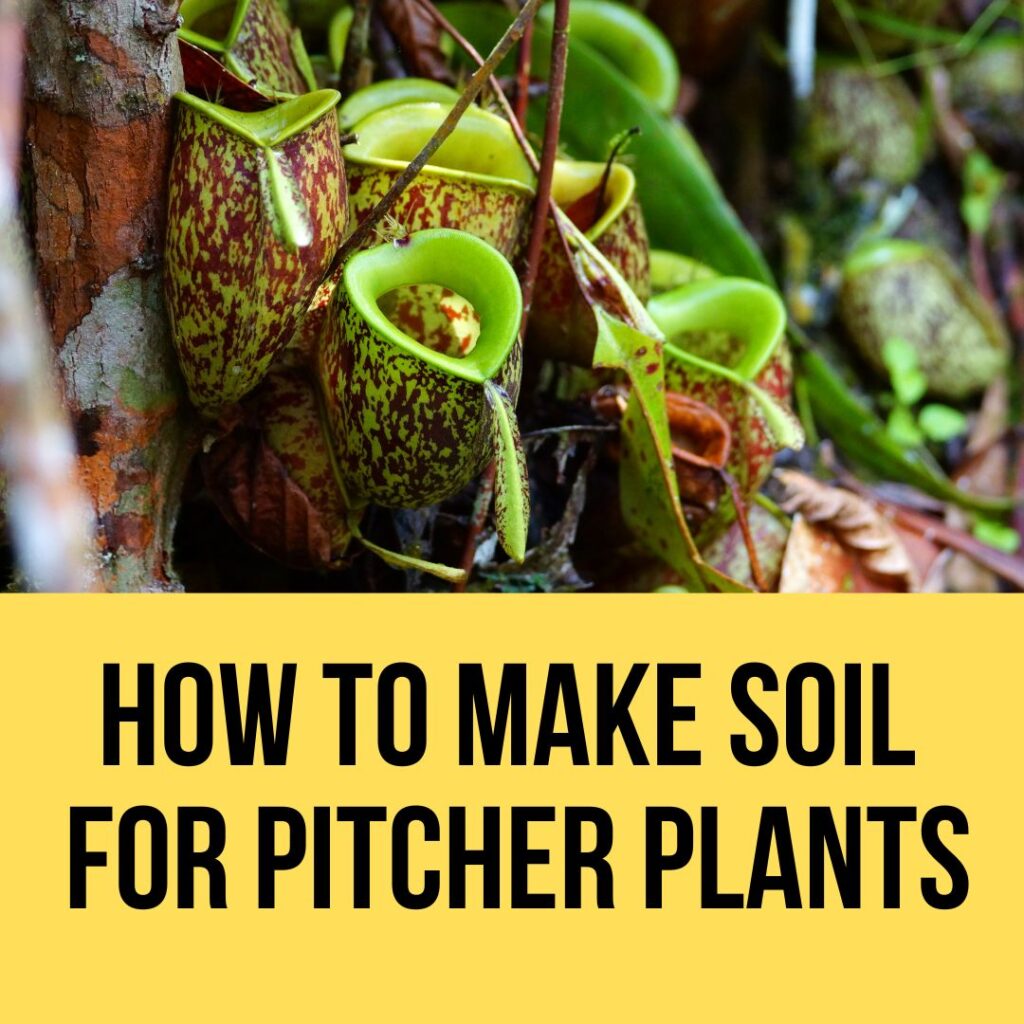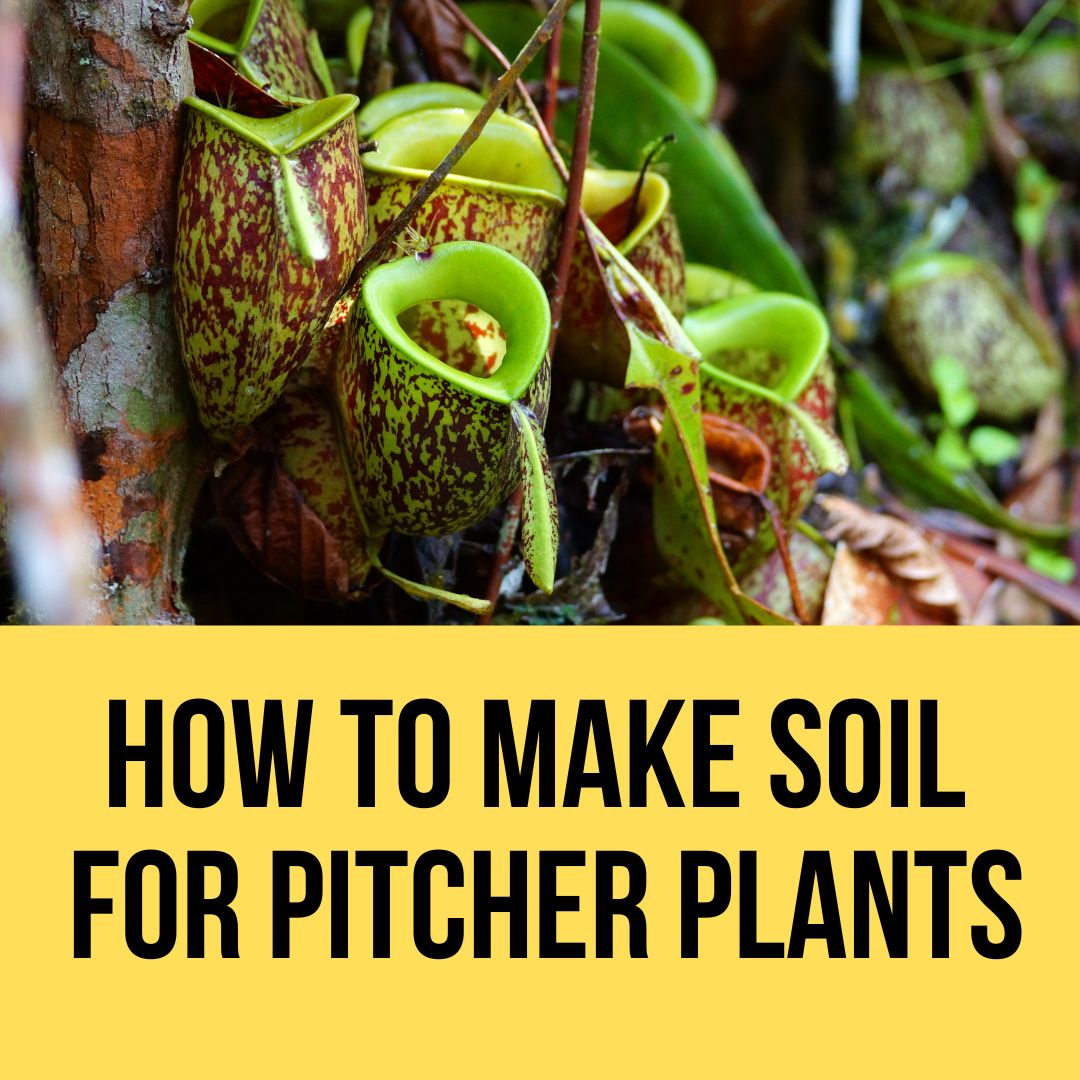When most people think about pitcher plants, the soil is not the first thing that comes to their minds. When people think about what it takes to keep pitcher plants alive, they often focus on the fact that the plants acquire their nutrition from the insects they catch in their pitchers. As a result, the other components of their gardening might often be neglected.
How to prepare the soil for pitcher plants?
The following is a rundown of the most fundamental information pertaining to the composition of soil for pitcher plants:
- Pitcher plants are indigenous to the United States of America and may be found growing on relatively nutrient-deficient soil in the southeastern part of the country.
- Pitcher plants do not need soil that is particularly rich in nutrients; nevertheless, they do require a soil medium that drains extremely well.
- Peat moss, bark, and vermiculite are the three components that should be combined and used as the medium for growing pitcher plants in containers.
- Plants that look like pitchers may be cultivated outside in soils that are somewhat acidic.
- Pitcher plants grown outside are a kind of swamp plant and need consistent moisture. Pitcher plants thrive near the margins of water gardens because the soil there is naturally marshy and damp.
When used in a ratio of 2:1, a mixture consisting of half perlite and half sphagnum moss is an excellent medium for pitcher plants. Horticultural sand that does not include lime may also be worked into the soil to improve drainage.
Fertilizing indoor pitcher plants with orchid food once a month from spring through autumn is recommended, despite the fact that, in general, these plants do not need fertilizer. Take care not to over-fertilize, since this may cause a buildup of minerals and degradation in the plant if it is not done properly.
Due to its impacts on habitat destruction and global warming, peat is a contentious soil addition. As a result, many producers are transitioning away from peat and toward peat-free mixtures such as milled bark, horticultural grit, and perlite, in the proportions of 2:1:1.

Pitcher plants are able to obtain a significant amount of their own food from the environment around them and do not need a great deal of assistance. However, since they have adapted through time to survive in a very particular environment, it is necessary for the individuals who cultivate them to recreate the exact same circumstances in order for them to flourish.
What Specific Components of the Soil Do Pitcher Plants Require?
Pitcher plants, despite the fact that they are categorized as carnivorous, have the same requirements of the soil as the majority of other types of plants. The following are some of the biological methods in which the soil provides sustenance for pitcher plants and other types of plants:
The ability of a plant’s root system to anchor itself and stabilize itself in the soil protects the plant from damage and makes the biological processes that it participates in more efficient.
Pitcher plants take in oxygen from the oxygen that is stored in the soil, and they then utilize this oxygen to break down carbohydrates and release the energy that is necessary for them to survive and continue to develop.
Pitcher plants are unique in that they are able to suck water up through the soil and utilize it for a variety of purposes, including keeping themselves cold, maintaining cell growth, transporting nutrients, and as a raw material in the process of photosynthesis.
It is essential to the plant’s survival throughout the warmest and coldest seasons of the year that the soil perform its function as an insulator to protect the plant’s delicate root system.
The plant receives the nutrients and minerals it needs from the soil.
The evolution of pitcher plants to thrive in situations with very little soil nutrients sets them apart from all other plant species. This is what spurred the evolution of these plants to be able to take in nutrients not just via their roots but also by using insect traps, also known as pitchers.
These pitchers are used by pitcher plants to drown their prey and then consume the nutrients that are released from the decaying bodies of insects and other tiny animals. They get a smaller portion of their nutrients from the earth.
Despite this, the kind of soil in which pitcher plants are grown remains an extremely significant factor. They need soil that is always damp, but in addition to that, they require soil that drains properly. They also fare poorly in soils that are rich in the organic matter since this is the reverse of the sort of soil that they evolved to grow in and hence is not optimal for their growth.
What Ingredients Go into Pitcher Plant Soil Mixes?
Due to the sensitivity of pitcher plants to the soil, which they are grown in, gardeners have learned to combine a very particular set of soil amendments to create a soil mix that has the best success rate for producing pitcher plants.
The proportions of aerating materials to water/nutrient retention materials might vary, but it’s crucial to have a combination of both to supply pitcher plants with the proper amount of effective drainage without drying them out.
The many types of soil amendments that are generally used to create a soil mixture for producing pitcher plants are as follows:
- Sphagnum/peat moss
- Perlite
- Vermiculite
- Grated/milled bark
- Horticultural grit
- Horticultural charcoal
- Horticultural sand
Whenever selecting soil additions for pitcher plants, it is necessary to keep in mind that drainage and anchoring are far more critical to pitcher plants than nutrients.
What Should Not Be Included in soil for Pitcher Plants?
When constructing soil mixes for pitcher plants, it is recommended to avoid using some kinds of sand in favor of those with higher organic content, such as potting soil, orchid substrate, compost, or manure.
It is okay to use playground sand as a replacement for horticulture sand if the latter is either unavailable in your area or too costly; nevertheless, the sand must be carefully cleaned before being put to any other use.
The contractor’s sand often includes a lot of silt and other components akin to clay, therefore it’s best to avoid utilizing it. Also, beach sand is bad for plants since it includes lime and salt. Pitcher plants are unable to survive in saltwater settings, thus they must be found in bogs with a constant supply of freshwater.

What Amendments Should I Make to the Soil for Outdoor Pitcher Plants?
When caring for pitcher plants, you may want to keep them outside rather than indoors. Additionally, if you happen to live in a region where pitcher plants are naturally found, you might not even need to make significant changes to the soil in order to keep your plants happy and healthy.
The fact that the Southeast is known for having thick clay soils, which do not drain well and are not ideal for growing pitcher plants, is the primary obstacle that must be overcome in order to successfully cultivate pitcher plants in this region, which is their natural habitat.
If you are trying to cultivate pitcher plants in an area with heavy clay soils or rich organic soils, you will need to add a significant quantity of low-nutrient aerating materials to the soil, such as horticultural grit or perlite. This will help to break up the soil and reduce the number of nutrients that the plants are able to absorb from the soil.
Parting Thoughts
When given the proper soil, pitcher plants are low maintenance and easy to care for.
Even though pitcher plants get most of their nutrients from other parts of their environment, the degree of moisture, acidity, and composition of the soil is still very important for ensuring that your pitcher plants have the greatest chance of looking their best.
Hopefully, this article answers all your questions. Thanks for stopping by! Happy gardening!!!
